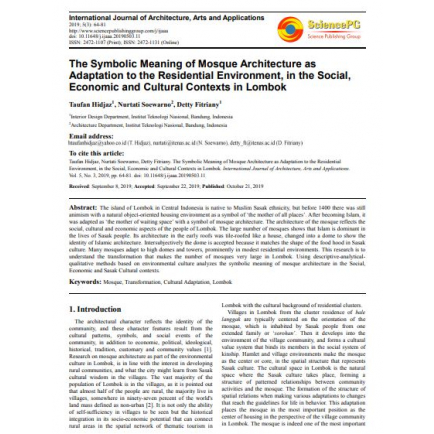
The Symbolic Meaning of Mosque Architecture as Adaptation to the Residential Environment, in the Social, Economic and Cultural Contexts in Lombok
Date Added
04/07/2022
Content Type
Documentary
Category
Researches
Link to Content
Subject Area
Mosques
Author
"Taufan Hidjaz
Nurtati Soewarno
Detty Fitriany"
Publisher Name
International Journal of Architecture Arts and Applications
Year of Publication
2019
Description
: The island of Lombok in Central Indonesia is native to Muslim Sasak ethnicity, but before 1400 there was still
animism with a natural object-oriented housing environment as a symbol of ‘the mother of all places’. After becoming Islam, it
was adapted as ‘the mother of waiting space’ with a symbol of mosque architecture. The architecture of the mosque reflects the
social, cultural and economic aspects of the people of Lombok. The large number of mosques shows that Islam is dominant in
the lives of Sasak people. Its architecture in the early roofs was tile-roofed like a house, changed into a dome to show the
identity of Islamic architecture. Intersubjectively the dome is accepted because it matches the shape of the food hood in Sasak
culture. Many mosques adapt to high domes and towers, prominently in modest residential environments. This research is to
understand the transformation that makes the number of mosques very large in Lombok. Using descriptive-analyticalqualitative methods based on environmental culture analyzes the symbolic meaning of mosque architecture in the Social,
Economic and Sasak Cultural contexts.





